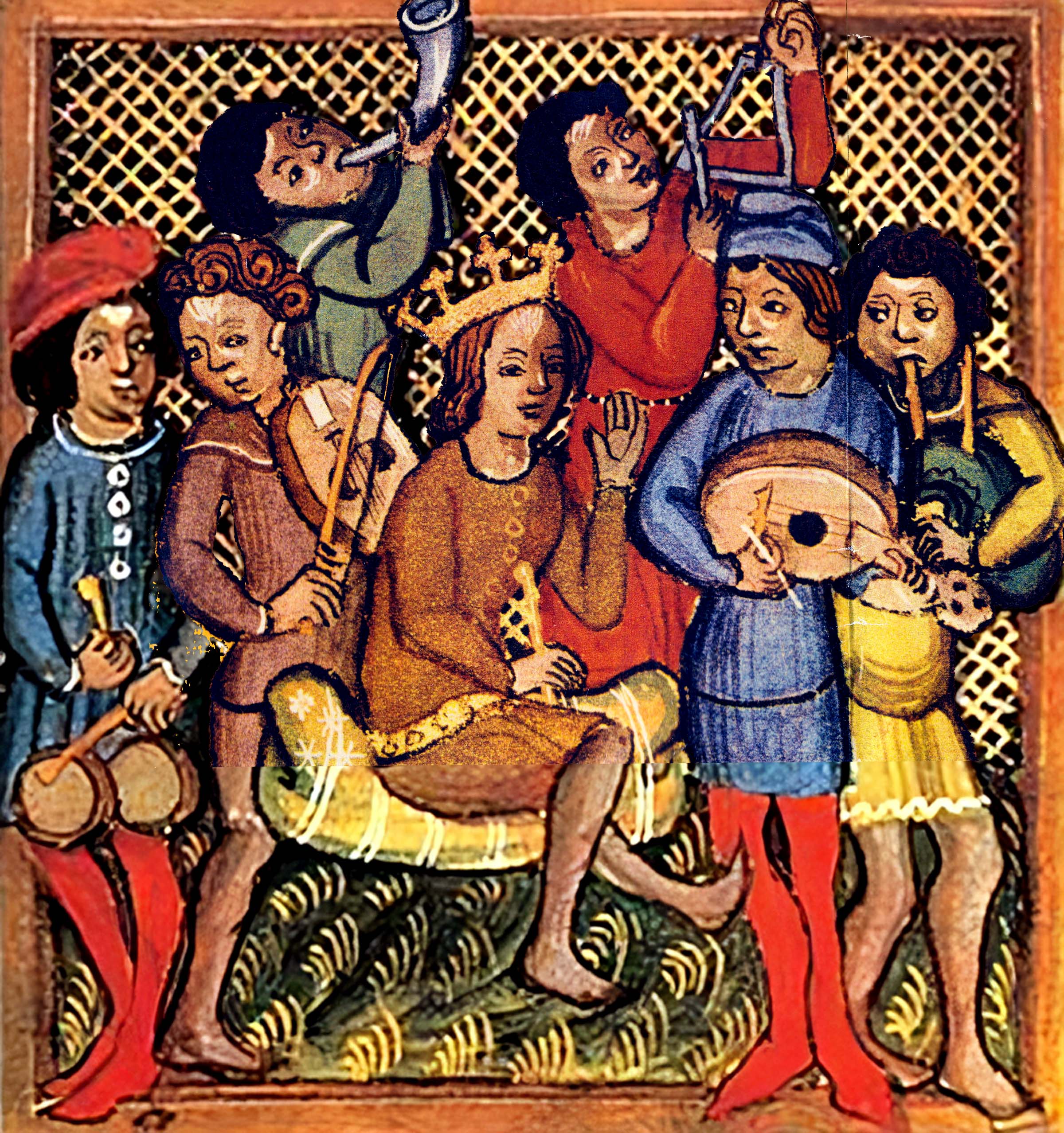 W
WThe Black Death in medieval culture includes the effect of the Black Death (1347–1350) on art and literature throughout the generation that experienced it.
 W
WBoutehors (/butor/) was a term pertaining to table practices during the Middle Ages. It refers to the last element of a meal, which was frequently served in another room. Before the boutehors came the serving. It was preceded by the services of the first plate, second plate, the pies, glazing of the desserts, pudding, and clearing of the table.
 W
WThe Eastern Roman Empire, also referred to as the Byzantine Empire, or Byzantium, was the continuation of the Roman Empire in its eastern provinces during Late Antiquity and the Middle Ages, when its capital city was Constantinople. It survived the fragmentation and fall of the Western Roman Empire in the 5th century AD and continued to exist for an additional thousand years until it fell to the Ottoman Empire in 1453. During most of its existence, the empire was the most powerful economic, cultural, and military force in Europe.
 W
WThe curfew bell was a bell rung in the evening in Medieval England as the curfew signal for everyone to go to bed.
 W
WSources for an understanding of dance in Europe in the Middle Ages are limited and fragmentary, being composed of some interesting depictions in paintings and illuminations, a few musical examples of what may be dances, and scattered allusions in literary texts. The first detailed descriptions of dancing only date from 1451 in Italy, which is after the start of the Renaissance in Western Europe.
 W
WIn medieval and Early Modern England, Wales and Ireland, a deer park was an enclosed area containing deer. It was bounded by a ditch and bank with a wooden park pale on top of the bank, or by a stone or brick wall. The ditch was on the inside increasing the effective height. Some parks had deer "leaps", where there was an external ramp and the inner ditch was constructed on a grander scale, thus allowing deer to enter the park but preventing them from leaving.
 W
WAn escoffion was a piece of female medieval headwear which was popular during the Late Middle Ages (1250–1500). It originated and was popular in European countries such as England, France and Germany, and other Balkan states. The headpiece was made out of a thick, circular roll of material like wool, felt or silk. The material was shaped, by sewing or starching, into a double-horned configuration, with each horn sometimes being up to a yard long. Over the headdress, gauze or silk was sometimes draped for weight distribution or aesthetic purposes. The escoffion style was a sub-branch of a popular style of headwear called hennin.
 W
WEarly Germanic culture refers to the culture of the early Germanic peoples. Largely derived from a synthesis of Proto-Indo-European and indigenous Northern European elements, the Germanic culture developed out of the Nordic Bronze Age. It came under significant external influence during the Migration Period, particularly from ancient Rome.
 W
WHastilude is a generic term used in the Middle Ages to refer to many kinds of martial games. The word comes from the Latin hastiludium, literally "lance game". By the 14th century, the term usually excluded tournaments and was used to describe the other games collectively; this seems to have coincided with the increasing preference for ritualistic and individualistic games over the traditional mêlée style.
 W
WThis list of oldest heraldry aims to include the oldest documented, non-attributed heraldic achievements for individuals, families, locations or institutions.
 W
WMedieval literature is a broad subject, encompassing essentially all written works available in Europe and beyond during the Middle Ages. The literature of this time was composed of religious writings as well as secular works. Just as in modern literature, it is a complex and rich field of study, from the utterly sacred to the exuberantly profane, touching all points in-between. Works of literature are often grouped by place of origin, language, and genre.
 W
WIn the broadest sense, Medieval music encompasses the music of the Western Europe during the Middle Ages, from approximately the 6th to 15th centuries. It is the first and longest era of Western classical music and followed by the Renaissance music; the two eras comprise what musicologists term as early music, proceeding the common practice period. Musicologists generally divide the era into early (500–1150), high (1150–1300), and late (1300–1400) Medieval music.
 W
WEuropean science in the Middle Ages comprised the study of nature, mathematics and natural philosophy in medieval Europe. Following the fall of the Western Roman Empire and the decline in knowledge of Greek, Christian Western Europe was cut off from an important source of ancient learning. Although a range of Christian clerics and scholars from Isidore and Bede to Jean Buridan and Nicole Oresme maintained the spirit of rational inquiry, Western Europe would see a period of scientific decline during the Early Middle Ages. However, by the time of the High Middle Ages, the region had rallied and was on its way to once more taking the lead in scientific discovery. Scholarship and scientific discoveries of the Late Middle Ages laid the groundwork for the Scientific Revolution of the Early Modern Period.
 W
WA tree of virtues is a diagram used in medieval Christian tradition to display the relationships between virtues, usually juxtaposed with a tree of vices where the vices are treated in a parallel fashion. Together with genealogical trees, these diagrams qualify as among the earliest explicit tree-diagrams in history, emerging in the High Middle Ages.
 W
WThe wolf has been widely used in many forms in heraldry during the Middle Ages. Though commonly reviled as a livestock predator and man-eater, the wolf was also considered a noble and courageous animal, and frequently appeared on the arms and crests of numerous noble families. It typically symbolised the rewards of perseverance in long sieges or hard industry.